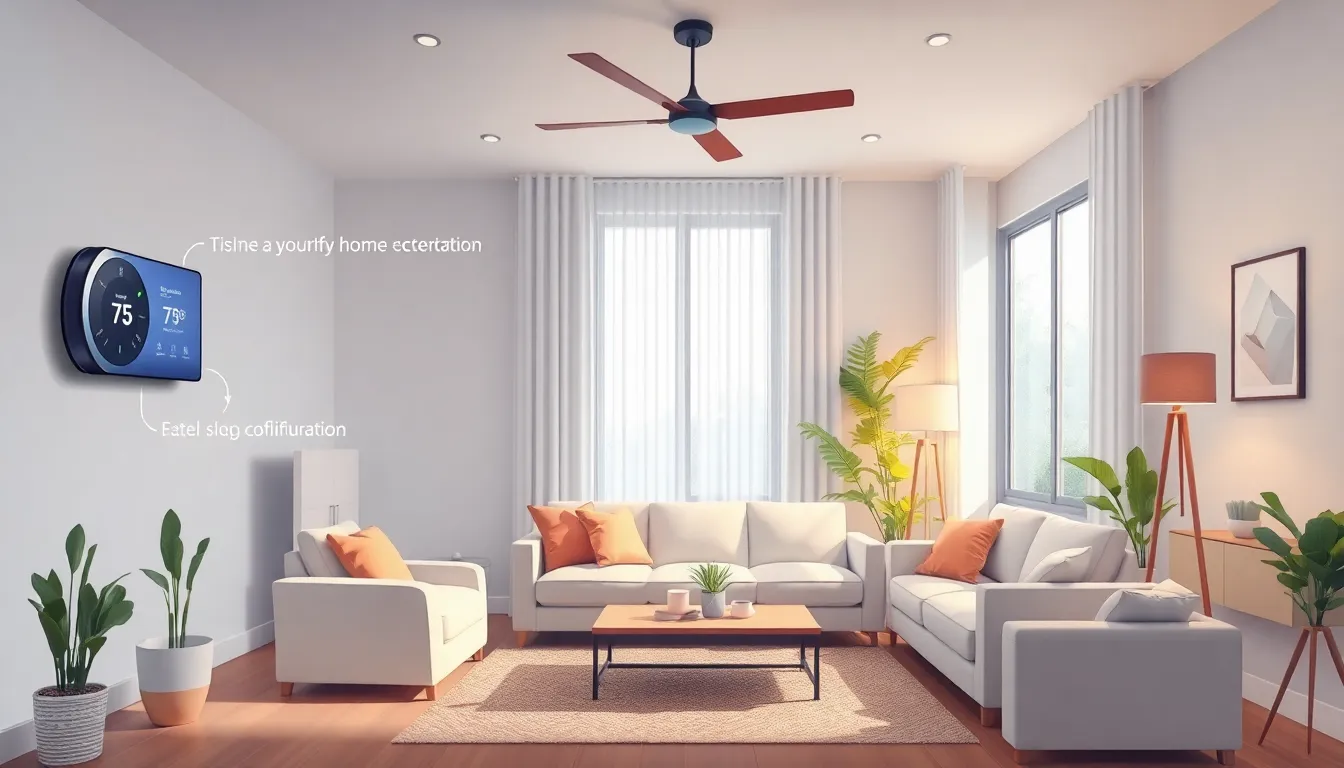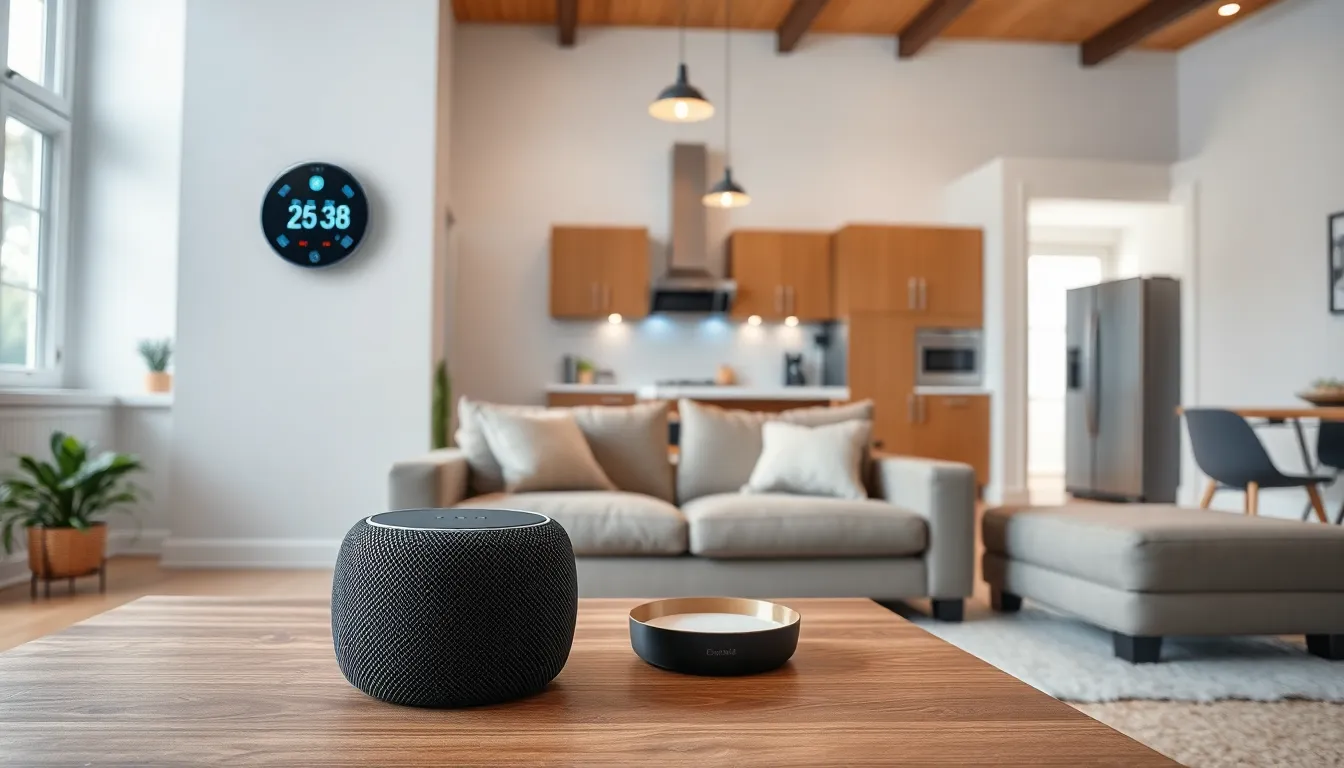Imagine walking into your home and having it greet you like an old friend. With the rise of home AI, that dream isn’t far from reality. These smart systems are revolutionizing how we interact with our living spaces, blending convenience and innovation in ways that’d make even the Jetsons jealous.
From managing your daily tasks to creating the perfect ambiance for movie night, home AI is the ultimate sidekick. It’s like having a personal assistant who never complains about coffee breaks or takes a day off. As technology evolves, reimagining home AI isn’t just about gadgets; it’s about transforming everyday life into something extraordinary. So buckle up and get ready to discover how these advancements can turn your home into a smart haven that anticipates your every need.
Table of Contents
ToggleUnderstanding Home AI
Home AI encompasses a range of technologies designed to enhance daily life through intelligent automation. This innovation includes systems that streamline various tasks and adapt to user preferences, creating a more connected living environment.
Definition of Home AI
Home AI refers to devices and applications that utilize artificial intelligence to perform household functions. These technologies can control lighting, thermostats, security systems, and entertainment systems. They learn user behaviors and preferences, providing personalized experiences. Devices like smart speakers, home assistants, and connected appliances exemplify home AI’s capabilities, contributing to a seamless and efficient home environment.
The Evolution of Home AI
Home AI has undergone significant advancements over the past decade. Initially, basic automation systems performed simple tasks, such as scheduling reminders or controlling lights remotely. Modern systems now integrate machine learning and data analytics. They can predict user needs and optimize energy consumption. Notable developments include the rise of voice-activated assistants and integration with IoT devices. As technology matures, home AI continues to push boundaries, transforming traditional living spaces into responsive, intelligent environments.
Benefits of Reimagining Home AI


Reimagining home AI brings numerous advantages, enhancing daily living and optimizing home environments.
Enhanced Convenience and Automation
Automated systems streamline daily tasks. Smart technology executes routines, from adjusting lighting to controlling appliances, with minimal user input. Many devices integrate seamlessly, enabling users to manage their homes through voice commands or simple interfaces. Effortless management makes life easier, freeing individuals to focus on other priorities. Users can remotely monitor their homes, ensuring peace of mind when away. Advanced home AI anticipates needs and adapts settings accordingly, creating personalized experiences unique to each household.
Improved Energy Efficiency
Energy-efficient systems significantly reduce waste. Home AI optimizes heating and cooling based on occupancy and preferences, leading to cost savings on utility bills. Smart thermostats learn user patterns, adjusting temperatures automatically for maximum efficiency. Lighting systems powered by AI dim or brighten based on natural light, enhancing both comfort and energy usage. Many devices offer real-time energy consumption data, allowing users to make informed choices about their habits. By optimizing energy use, home AI contributes to a sustainable future.
Key Technologies Behind Home AI
Home AI encompasses innovative technologies that enhance daily living experiences through connectivity and intelligence. The integration of these technologies transforms homes into smart environments.
Smart Devices and IoT Integration
Smart devices form the backbone of home AI systems. Thermostats, lights, security cameras, and speakers connect seamlessly through the Internet of Things (IoT). These devices collect and share data, enabling users to monitor and control their environments remotely. For example, smart lights can adjust based on occupancy and time of day. Security systems can send alerts directly to users’ smartphones. Integration expands functionality, allowing multiple devices to communicate, creating a cohesive ecosystem that anticipates user needs.
Machine Learning in Home Automation
Machine learning empowers home AI to learn from user interactions over time. This technology processes data received from various smart devices, allowing systems to adapt and optimize performance. For instance, a smart thermostat can learn a user’s temperature preferences and adjust settings automatically. It enhances energy efficiency by predicting heating and cooling patterns. Predictive analytics also enables home AI to recommend energy-saving practices tailored to user habits, improving overall sustainability.
Challenges in Implementing Home AI
Implementing home AI technology faces several challenges that require attention.
Privacy and Security Concerns
Users often express concerns about the privacy and security of their data. Smart devices can collect vast amounts of personal information which may be vulnerable to hacking. Ensuring robust data encryption and secure communication channels is crucial for protecting sensitive user data. Regulatory compliance, such as GDPR, mandates stringent data protection measures to safeguard users. Trust can diminish if consumers regularly hear about data breaches related to home AI devices. Manufacturers must prioritize transparency, providing users with clear information about data usage and storage. Reducing risks through constant software updates helps maintain secure environments.
Technological Limitations
Technological limitations also pose significant obstacles in the adoption of home AI. Connectivity issues can disrupt the seamless functioning of smart devices. Many homes experience inadequate internet coverage, affecting the reliability of AI systems. Compatibility problems arise when integrating devices from different manufacturers, leading to confusion and frustration. Additionally, insufficient advancements in AI algorithms hinder the ability of systems to effectively learn and adapt to user preferences. Complexity can deter users who may find it challenging to navigate intricate setups. Addressing these limitations is essential for the widespread acceptance of home AI technologies.
Future Trends in Home AI
Future trends in home AI spotlight advances that focus on personalization and integration with broader smart technologies. The ongoing evolution of these systems enhances everyday living.
Increased Personalization
Increased personalization ranks high among home AI trends. Smart devices now adapt to individual preferences, refining their functionality through user data. Home AI systems learn routines, tailoring settings for lighting and temperature. Optimized responses create comfortable environments aligned with user habits. For instance, automated assistants can provide reminders based on daily schedules. Enhanced personalization ensures users experience seamless interactions with their devices, fostering greater satisfaction.
Integration with Smart Cities
Integration with smart cities represents a significant shift in home AI development. These systems collaborate with urban infrastructure to improve efficiency. For example, smart homes connect to public utilities, optimizing energy usage and reducing costs. Enhanced traffic management benefits from real-time data sharing, leading to smoother commutes. Additionally, shared resources between homes and cities promote sustainability. Citizens gain access to improved services, enhancing the overall living experience. This urban synergy showcases the future of AI-driven environments.



